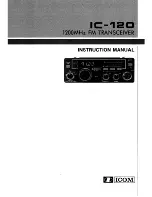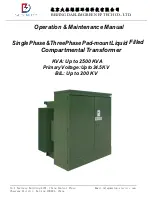
Type 846 and Model 3311
Instruction Manual
Form 5739
February 2002
6–4
Figure 6-4. CENELEC Flameproof Module
A6651/IL
CENELEC flameproof certification and
could allow flames to spread from the
unit potentially igniting and causing
an explosion (see figure 6-4).
Note
The module cover O-ring must be in
the O-ring gland, not down on the
threads of the cover. This will ensure
proper sealing of the pilot pressure
area.
3. Position the retaining clips in the module cover so
they are ready to accept the feet of the module final
assembly. Ensure the leaves on the retaining clips
are facing up. Figure 6-1 shows the correct
orientation.
4. Insert one of the module feet into a cover slot,
and push on the module final assembly to compress
the retaining clip. Insert the opposite foot into the
opposite cover slot, and rotate the module 90
degrees in the module cover to secure it in place.
5. Ensure that the three module O-rings are in the
O-ring glands and are lightly lubricated with silicone
grease. Inspect the O-rings to ensure that they are
not twisted or stretched.
6. Apply lubricant to module cover threads for ease
of assembly.
7. Prepare to insert the module into the housing.
Align the V-groove located on the module final
assembly with the indicating mark located on the
nameplate. This positions the alignment key with the
key slot. Figure 6-1 shows the location of the
V-groove and the indicating mark.
8. Insert the module, engage the module cover
threads, and screw on the module cover. The
module final assembly will automatically engage the
electrical feedthroughs and span and zero screws.
9. Hand tighten the module cover as much as
possible. Use a wrench or long screwdriver shaft to
tighten the module cover an additional 1/4 to 1/2 turn
(24 to 27 N
S
m) (18 to 20 lbf
S
ft). For units with
CENELEC Flameproof Certification, make sure the
cover lock and screw have been securely
re-installed. The screw accepts a 3 mm hex drive.
Note
When the module cover is tightened,
connection is made with the electrical
feedthroughs and span and zero
screws, and the module final
assembly O-rings become seated.
Failure to fully tighten the module
cover may prevent the transducer
from operating properly.
Electronic Circuit Board
The electronic circuit board is located on top of the
module final assembly, as shown in figure 6-1.
Beneath the circuit board and permanently attached
to it is the pressure sensor. Two jumpers on the
circuit board control various functions of the
transducer. Figure 6-5 shows the location of these
jumpers.
Optional Remote Pressure Reading
(RPR) Jumper
Remote Pressure Reading (RPR) is an optional
diagnostic feature that enables the operator to
determine the transducer output signal from any
location along the signal wire path. The transducer
generates a frequency signal that can be received
by a HART Communicator or a frequency counter.
Operation of the RPR feature is jumper-selectable,
in units so equipped. The RPR feature operates
when the jumper is located in the N position on the
circuit board. With the jumper in the D position, the
RPR feature does not operate. When the RPR
feature is included, the transducer is shipped with
the RPR jumper in the N position, unless otherwise
specified. For more information about the RPR
feature, refer to Remote Pressure Reading (RPR)
in Section 5.















































